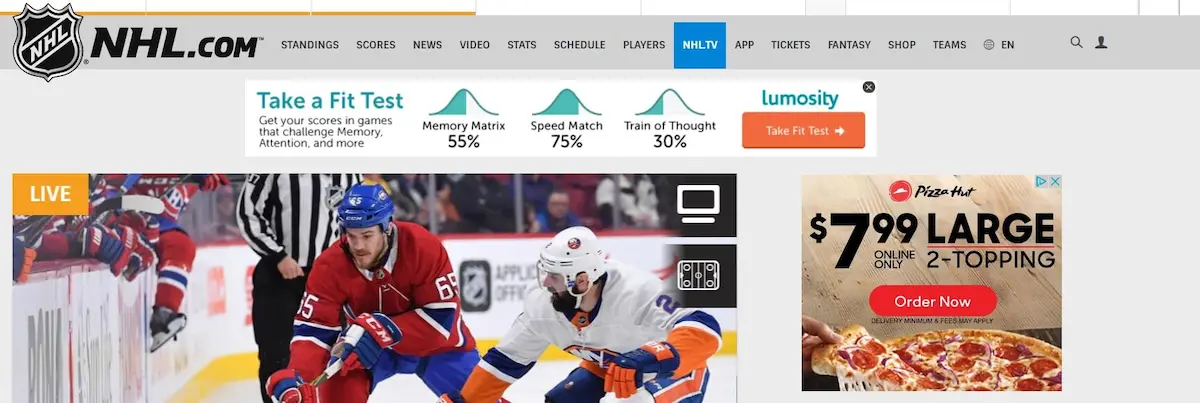What Is Affiliate Marketing? Learn The Basics & Earn Revenue
The internet is awash with content producers, many of whom have large audiences that other businesses can tap into. If you can find a YouTube star, blogger, or website owner with an engaged audience, they might be willing to promote your products or services through affiliate marketing, producing extra revenue for your business while earning commission for it.
In this article, we explore the mutually profitable concept of affiliate marketing, and how you can start it for your business to generate extra revenue.
What is affiliate marketing?
Affiliate marketing is promoting another company’s products or services for commission. They can be promoted through any type of content, including videos, blogs, adverts, and educational pieces, and any type of platform, like websites, social apps, email, and television. All a person needs is a platform and engaged audience, at which point they can make money from affiliate marketing, while bringing in extra revenue for the businesses whose products they are promoting. The people who promote products in this way are known as “affiliates,” or “affiliate marketers,” who earn passive income (the best type of income) with their efforts.
The earning potential for an affiliate marketer is correlated with how big their audience is. Blogger Adam Enfroy has around 500,000 monthly readers,4 and he pulled in about $126,000 USD in March of 2022.2 Deals Viking claim to earn around $3,000 a month.2 The bigger the audience, the more potential for profit for the affiliate and the business they are working with. Commission rates are influenced by the profit margin of the product being promoted. The higher the profit margin, the more commission can usually be paid to the affiliate.
But how do businesses know when people have been referred by an affiliate? This happens through an affiliate link, which contains a unique parameter that identifies the affiliate as the promoter, e.g. www.mediaheroes.com.au?affliate=bobsburgers. When a prospect is interested in the promoted product and clicks on the link, the business knows that the referral came from that particular affiliate, and if the prospect goes on to make a sale, they can pay the affiliate their agreed commission. If the business has multiple affiliates promoting the same product (likely), this model is known as “last-click attribution” because the commission goes to the affiliate whose link was last clicked. Browser cookies are also used to record other useful customer data like number of visits, locations, and more, although these now need to be legally agreed upon by prospects (as you would have seen on a million different websites).
Completing a sale is the most common conversion goal for affiliate programs because it’s directly tied to revenue, but other goals may be set depending on the objectives of the business, including:
- Submitting an enquiry (and becoming a new lead)—qualified leads are valuable, especially if the product or service is expensive or the cost to acquire a customer (CAC) is high.
- Creating a trial—this is used by software companies who want their prospects to try out their software. When they start a new trial, they become valuable leads.
- Downloading an app—this is another conversion goal used by software/app developers, who make money through app downloads.
- Signing up to a newsletter—rarer, but newsletter subscribers are prized commodities, so may be worth a commission payment to affiliates.
Affiliate marketing usually works best when the affiliate is promoting something that is directly related to their content or their business, and something they personally use and find useful. In this scenario, they are demonstrating a high degree of credibility to the prospect because they should already be familiar with that type of product, and are getting proven value from it. For example, travel vloggers might decide to promote international SIM cards that allow you to use your mobile phone around the world for cheap, or tough, comfortable hiking shoes they’ve used to scale lofty mountains. People will put much more faith in those recommendations because they are believable, compared to say, an endorsement for a financial advisor.
This type of related, recommendation-based marketing is called “involved affiliate marketing,” and is one of three types:
- Involved affiliate marketing—the affiliate’s business or content is related, and they have used the product and genuinely believe it will be useful for their audience. This is the most credible type of affiliate marketing, which is more likely to generate link clicks and sales for the business. Affiliate marketers know this, and can tread on ethically-dangerous ground if they make personal recommendations without having used the product.
- Related affiliate marketing—the affiliate’s business or content is related to the product, but they don’t claim to have used the product, or find value in it. This carries some credibility, but not quite as much. Still, the affiliate can create a promotion that highlights the key benefits of the product while not directly endorsing it, which can be successful.
- Unattached affiliate marketing—the affiliate has no connection or expertise with the product they are promoting. They are “unattached,” which is a less effective way to do affiliate marketing, but can still work.
Affiliate programs can be excellent money-makers for businesses. An affiliate is essentially an extra salesperson who isn’t contracted to the company; salespeople with existing audiences who don’t need to actively search for leads. If affiliates regularly produce great content, their followers are likely to already trust them, which puts them in the perfect position to recommend products and services. And as non-employees, they don’t have to be paid entitlements like annual leave, sick leave, or redundancy. They simply sell for you, and you pay them a commission. That’s why so many businesses create affiliate programs—they’re a way to “hire” armies of effective salespeople who advertise for you cheaply; a win-win for both parties. They’ve helped to make companies like Amazon and Google rich through their respective Amazon Associates and AdSense programs.
However, affiliate programs aren’t just peachy profit. When you have outsiders promoting your products, you need to be careful that they don’t damage or misrepresent your brand, or swindle you out of commission (more than 67% of brands worry about affiliate fraud1). Rules should be set and outlined in your program’s contractual agreement, which may cover areas such as:
- Which products can be promoted
- How your product’s imagery or brand logo can be used, including intellectual property rights. This helps to support and strengthen your brand story.
- What people can (or can’t) say about your product or brand
- How people can promote their affiliate links. For example, you may not want people to use your brand’s keywords in PPC advertising, which effectively “steals” traffic that should be going directly to your website (this is called “brand bidding”)
- Whether the affiliate can promote similar products from other companies, or whether they are bound by exclusivity
Of course, you will also need to include the commission terms in the contract, including what the prospect must do for the affiliate to be paid, and how much they will be paid.
The original concept of affiliate marketing was created by American entrepreneur William J Tobin, who in 1994, invented tracking and affiliate marketing services through his company PC Flowers and Gifts. Four years later, the company had over 2,700 affiliates—a huge success that kickstarted the entire industry.5 Today, the affiliate marketing industry is expected to grow to $15.7 billion USD by 2024,1 with more than 25% of brands partnering with bloggers in their affiliate programs.1
Affiliate marketing examples
Here are a few affiliate marketing examples from across the web:
Kara & Nate (YouTubers)
Travel vloggers Kara & Nate are involved in plenty of affiliate programs, and make good money from them. In their last income report from 2019, they made $28,642 in the second quarter of the year alone.6
They tend to include their affiliate ads in the middle of videos, which can feel like it blends more naturally, and may deter people from skipping them. The products are always personal recommendations from either of them.
NHL

In this affiliate banner advert from NHL, they are promoting a memory “fitness” test from Lumosity, which ties directly into their sport, and adds credibility to the product. Nice.
Gear Patrol
Gear Patrol is a comparison website for products like clothing, electronics, and sports gear. We can’t say for sure whether their products generate affiliate income for them, but these types of websites usually do, so it’s likely. Their “adverts” are in the form of articles such as the one above, which comes across as unbiased and informative.
Affiliate marketing for beginners—how to start affiliate marketing
Affiliate marketing can seem daunting for businesses who want to partake, or content producers who want to make money from affiliate programs. But it doesn’t have to be. Here’s an overview of how to start affiliate marketing on both sides of the relationship.
Businesses that want to start affiliate programs
As a business that wants to start profiting from affiliates, you’ll need to do three things: decide the details of your program, find affiliate marketing software to manage it, and find some affiliates.
1. Decide the details of your program
Most successful business projects have goals, and affiliate programs are no exception. Identify your reasons for starting the program (it’s usually to build revenue), and then turn them into a clear goal that uses the SMART system. For example, your goal might be “Make $5,000 of affiliate revenue in Q4 of 2022.”
Once you have a clear goal, you can set the other key elements of the program, with the most important being:
- Products—which products would you like affiliates to promote? You might want to choose some of your proven best sellers, or products with high-profit margins that allow you to pay attractive commissions.
- Commission structure—how are you going to pay your commissions? Two common ways are:
- Percentage—this usually works if you offer a variety of products or services with different prices, because it allows you to vary the percentage based on how much the product costs.
- Flat-rate—this tends to be better if you offer products or services that are similarly priced.
- Commission rates—decide how much you are going to pay your affiliates for each product. You’ll want to find a number that is enticing enough to attract new affiliates, while providing acceptable profit. You can consider your profit margins for the products, your customer acquisition costs (CAC), customer lifetime value (CLV), and more. This is one of the trickiest parts of creating an affiliate program, and we recommend checking how your competitors do it, or others in your industry. This can yield good insights for the rest of your program too.
- Payment method—confirm how you will pay your affiliates, the institutions (banks) or software (e.g. Stripe) you will use, and the frequency of payment.
- Incentives—are you going to offer any incentives to prospective customers, like free shipping? These will probably improve conversions of your affiliate sales, as they would with regular sales.
- Contract terms—protect the integrity of your brand and program by outlining its terms. This guides affiliates in what they can and cannot do. You can cover important stuff like the methods affiliates can use to promote your products, how your brand imagery can be used, and more.
2. Find affiliate marketing software
With the primary elements of your program done, you’ll now need to find affiliate marketing software to manage everything. Affiliate programs are complex things with plenty of moving parts. You’ll need to be able to generate affiliate links, track sales and commissions, analyse stats, and more, and while you can manage all of this in a spreadsheet, you won’t be able to scale up the program unless you use software to do the heavy lifting.
There’s plenty of affiliate marketing software to choose from, including Marketo, Referson, and Affiliatly, which you’ll need to compare to figure out which works for your specific program and budget. Key features to look for include:
- Signing up new affiliates with registration pages
- Creating commission tiers or affiliate groups
- Analysing stats and tracking performances for affiliates
- Creating coupon codes and other incentives
- Finding new affiliates through their networks (more on this below)
3. Find affiliates
Now you’ve set everything up, all that’s left to do is find some affiliates to start generating business! There are plenty of ways to approach this, including:
- Join an affiliate network (also known as an affiliate marketplace)—an affiliate network is a platform that connects businesses with affiliates. It allows businesses to promote their programs and find new affiliates, and affiliates to search for programs they might be interested in promoting. The most famous of these is Amazon Associates, but there are tons of others like ClickBank, the eBay Partner Network, and MaxBounty. These networks take a commission from each sale, and may also incur monthly fees.
- Use an affiliate marketing agency—these agencies can help to find suitable affiliates for your products, and also offer advice on all aspects of your affiliate program. They’ll take a commission for their work too.
- Find popular content producers with large audiences—you can save yourself extra commission payments by finding content producers directly, but it can take some work. The goal is to find trustworthy people who regularly produce content that is related to your business, have large audiences, and who won’t damage your brand. If you pay good commission for your program, they might be happy to promote your products.
- Partner with similar businesses—other businesses can become great affiliate partners. You can promote their products, and they can promote yours. You’ll obviously want to select businesses who aren’t in direct competition, while ideally being related in some way. It would be weird for an accountancy firm to team up with an ice cream shop.
- Leverage your existing happy customers—many of your customers are already using your products and getting value from them, which makes them solid affiliate candidates. Approach some of your happiest and most loyal customers and ask whether they would like to promote your products for a commission. A word of caution though: make sure your program runs smoothly, otherwise you’ll risk upsetting the customer and losing them.
- Attract affiliates with generous commissions—an obvious one, but worth saying: you’ll attract more affiliates if you offer generous commissions. It might even be worth making a loss on the program to begin with, and then slowly bringing down your commissions to more reasonable figures.
- Advertise—try running some Google, Facebook, and LinkedIn ad campaigns to find willing affiliates.
Those are the basics—good luck!
Marketers who want to start earning through affiliate marketing
If you’re a content-producing marketer who would like to start earning commissions through affiliate marketing, these are the key things you’ll need to consider:
- You need an audience—you won’t sell any products in an empty room. You either need a pre-existing audience, or you need to build one for yourself by producing excellent content. This usually takes years and a lot of hard work, but the rewards can be enormous. Remember that your income potential is only as good as the content you create.
- Find relevant programs—the best program will be one with products you personally find useful, good commissions, and reliable payments. You can find these through affiliate networks, agencies, or simple Google searches. Once you find a program, try to estimate how much work you’ll need to put in to promote its products, and how much you believe you’ll get back (although you will need to experiment to know for sure).
- Try to promote the products in a natural, story-based way—you’re essentially advertising to cold leads, so a softer approach usually works better when promoting products.
Remember that affiliate marketing isn’t all smooth sailing. Most people don’t like watching ads, and they can cheapen the content that you produce. But the commissions may be worth it. You’ll just need to keep an eye on your subscriber/follower counts to ensure that your audience doesn’t shrink too much.
References
- Werner Geyser, 2022, The State of Affiliate Marketing: Benchmark Report (2022), Influencer Marketing Hub
- Niall Doherty, 2022, 37 Affiliate Marketing Website Examples, eBiz Facts
- Affiliate marketing, Wikipedia
- Jussi Hyvarinen, Blog Growth Engine Review (Adam Enfroy) – Student’s Results, Jussi Hyvarinen
- William J. Tobin, Wikipedia
- Nate, 2019, Income & Expense Report | July – September 2019, Kara and Nate



